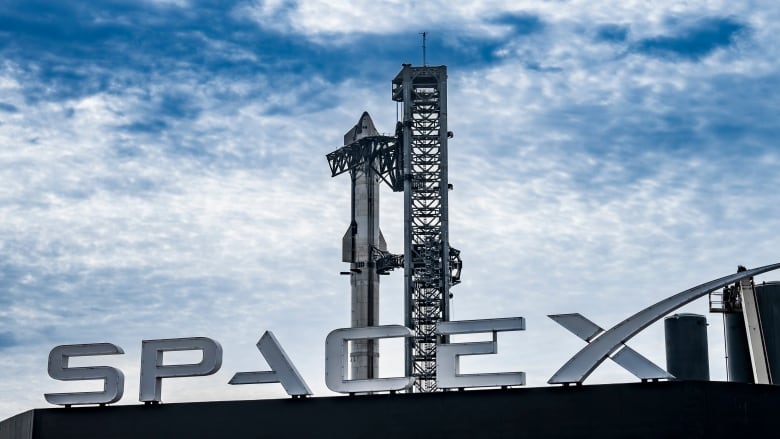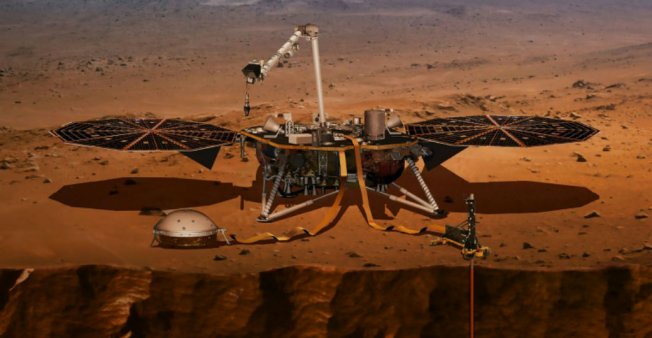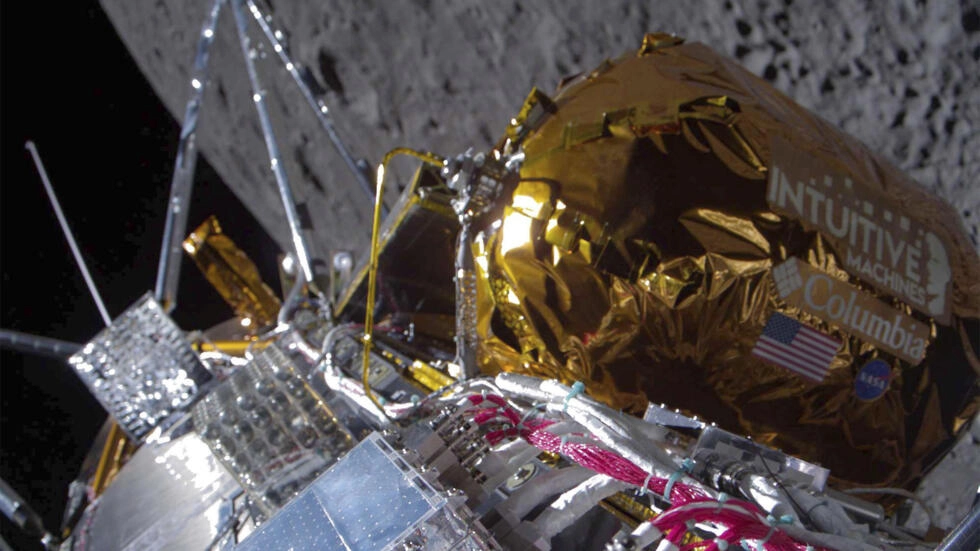SpaceX's Starship test flight makes it to space this time, but lost before splashdown

SpaceX's Starship mega rocket launched from Texas Thursday on its third test flight, staying intact longer than during the previous two flights but not making it all the way to its planned splashdown in the Indian Ocean.
No people or satellites were on board as the world's biggest and most powerful rocket soared Thursday from the southern tip of Texas near the Mexican border. NASA needs Starship to succeed in order to land astronauts on the moon in another two years or so.
Minutes after launch, the booster separated seamlessly from the spaceship and splashed down in the Gulf of Mexico.
The spacecraft continued on its flight eastward, reaching an altitude of 160 kilometres and approaching orbital speed — outperforming the previous attempts. The spacecraft was destroyed during atmospheric re-entry, the company said.
Musk congratulated his team on social media. "SpaceX has come a long way," he said via X.
The rocket company was founded exactly 22 years ago Thursday.
Dreams of humans on Mars
The 122-metre (or 37-storey) rocket is Musk's pet project, which he says will not only be able to spit out ever more Starlink satellites but also eventually take humans to Mars.
A variation of the SpaceX vessel, called the Human Landing System (HLS), will be critical to putting humans on the lunar surface. In order to do so, SpaceX needs to clear a number of hurdles, including demonstrating a ship-to-ship transfer of fuel.
Before today, Starship had seen only incremental achievements.
This launch was referred to as Starship's integrated flight test three (IFT-3), as it is the third time that both the booster and the spaceship itself were launched together.
— Elon Musk (@elonmusk) June 5, 2022
Maybe we should make an actual Starship model that dispenses pez for our merch store
From the public's perspective, IFT-1 and IFT-2 were unmitigated failures.
In the first, last April, the rocket cleared its gargantuan tower before blowing up just four minutes later — Musk and his fans like to use the term "a rapid unscheduled disassembly" — before the booster stage and spaceship could separate.
And that was only what happened in the air.
Back on terra firma, the aftermath was vast. Because IFT-1 went up without a launch suppression system at the pad — something to soften the fiery blast and shockwave — its 33 engines left an enormous crater below the launch pad. Debris was scattered for kilometres, leading to a barrage of recommendations from federal officials about how to best minimize the harm to the surrounding ecosystem by future launches.
The second test flight, last November, had a suppression system in place and caused minimal damage to the pad. The rocket successfully lifted off and the two stages managed to separate successfully — a demonstration of a new way of separation called "hot staging."
Starship’s hot-stage separation was the first time this technique has been done successfully with a vehicle of this size pic.twitter.com/nlfhcPo8m7
— SpaceX (@SpaceX) November 19, 2023
Unfortunately, the first stage was lost in an explosion. The second managed to make it into space, reaching 149 kilometres, before it, too, exploded.
While explosions aren't something the public typically deems as achievements, that's not the way space watchers necessarily see it. And certainly not SpaceX.
It deemed IFT-1 a success because it cleared the pad without exploding.
The second was touted as a success for proving that hot-staging — when the second stage booster ignites as the first separates — worked. And, as Musk said later, the second stage reached space before exploding.
But with Artemis III breathing down its neck, SpaceX needs to rack up more concrete wins.
Engineer and former NASA official Dan Dumbacher is hesitant to label the past Starship launches as either successes or failures.
The SpaceX Starship rocket is a critical part of NASA's plans. CBC’s science reporter Nicole Mortillaro explains why the explosion of the massive rocket isn’t hampering plans to send astronauts to Mars.
"If I had been looking at it with my old NASA badge on in my old NASA world, they're failures, because NASA has to operate in an environment where [they've] got, as I say, 536 investors watching over my shoulder, making sure I'm using public money appropriately," he said.
For SpaceX and others in the private sector, it's "a little bit of a different ball game," said Dumbacher, who is now CEO of the American Institute of Aeronautics and Astronautics.
"When you have Elon, or [Jeff Bezos] funding things, the buck all stops with them" — their private money allows them to operate differently, being somewhat less risk averse than NASA.
But with NASA relying on the triumph of commercial entities, things begin to change: progress needs to be made.
Paul Fjeld, who collaborated with NASA during the Apollo program, is confident that despite the enormous challenges ahead, SpaceX can rise to the occasion, though perhaps not in the current timeline.
"The engineering chops are there, and that's been demonstrated since the start of it," he said.
SpaceX's uncrewed spacecraft Starship, developed to carry astronauts to the moon and beyond, was presumed to have failed in space minutes after lifting off. Saturday's launch was a second test, after its first attempt to reach space ended in an explosion.
In order to reach NASA's safety requirements, SpaceX's HLS system will need to see close to 14 complete successful launches, and those won't be based on SpaceX's metric of "success." They all must be unqualified successes.
Seeing as this is just the third flight of the integrated system, it seems there's a long way to go.
Not that it's completely out of reach. Musk recently said the company has applied for nine Starship launches in 2024. And SpaceX's Star Base in Boca Chica, Texas, is always a hub of activity with boosters and Starships stacked up in rows.
"The thing that Musk does better than probably anybody else in any industry is to scale up and produce things at scale, in large quantities very quickly," Fjeld said.
"I think he could easily you know, fly again in two months, and then a month-and-a-half, and then a month later, and then every week for the rest of the year at the end."
For now, all eyes will be on what happens during IFT-3, to see if SpaceX achieves the milestones set out before it, and if it can collect enough data to fly again in rapid succession.
If SpaceX can't, seeing new boot prints on the moon may be farther off than NASA or other space-watchers may like.
Keywords

07/03/2019

26/11/2018
Newer articles
<p>Chinese officials say they "firmly oppose" the platform being divested.</p>
Ukraine ‘will have a chance at victory’ with new US aid, Zelenskyy says
Congress passes bill that could ban TikTok after years of false starts
Ukraine war: Kyiv uses longer-range US missiles for first time
How soon could US ban TikTok after Congress approved bill?
TikTok faces US ban as bill set to be signed by Biden
‘LOSING CREDIBILITY’: Judge explodes at Trump lawyers as case heats up
Claim rapper ‘made staff watch her have sex’
KANYE WEST PLANS TO LAUNCH 'YEEZY PORN' ... Could Be Coming Soon!!!
Trump lawyer tells SCOTUS that president could have immunity after ordering military to assassinate a political rival


